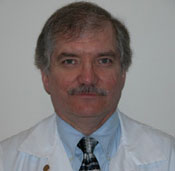Program Information
A Practical Process for Fabricating Passive Scatter Proton Beam Modulation Compensation Filters Using 3D Printing
T Zhao , R Drzymala*, Washington University School of Medicine, St. Louis, MO
Presentations
SU-E-T-61 (Sunday, July 12, 2015) 3:00 PM - 6:00 PM Room: Exhibit Hall
Purpose: The purpose of this project was to devise a practical fabrication process for passive scatter proton beam compensation filters (CF) that is competitive in time, cost and effort using 3D printing.
Methods: DICOM compensator filter files for a proton beam were generated by our Eclipse (Varian, Inc.) treatment planning system. The compensator thickness specifications were extracted with in-house software written in Matlab (MathWorks, Inc.) code and written to a text file which could be read by the Rhinoceros 5, computer-aided design (CAD) package (Robert McNeel and Associates), which subsequently generated a smoothed model in a STereoLithographic also known as a Standard Tesselation Language file (STL). The model in the STL file was subsequently refined using Netfabb software and then converted to printing instructions using Cura. version 15.02.1. for our 3D printer. The Airwolf3D, model HD2x, fused filament fabrication (FFF) 3D printer (Airwolf3D.com) was used for our fabrication system with a print speed of 150mm per second. It can print in over 22 different plastic filament materials in a build volume of 11” x 8” x 12”. We choose ABS plastic to print the 3D model of the imprint for our CFs.
Results: Prints of the CF could be performed at a print speed of 70mm per second. The time to print the 3D topology for the CF for the 14 cm diameter snout of our Mevion 250 proton accelerator was less than 3 hours. The printed model is intended to subsequently be used as a mold to imprint a molten wax cylindrical to form the compensation after cooling. The whole process should be performed for a typical 3 beam treatment plan within a day.
Conclusion: Use of 3D printing is practical and can be used to print a 3D model of a CF within a few hours.
Contact Email:


